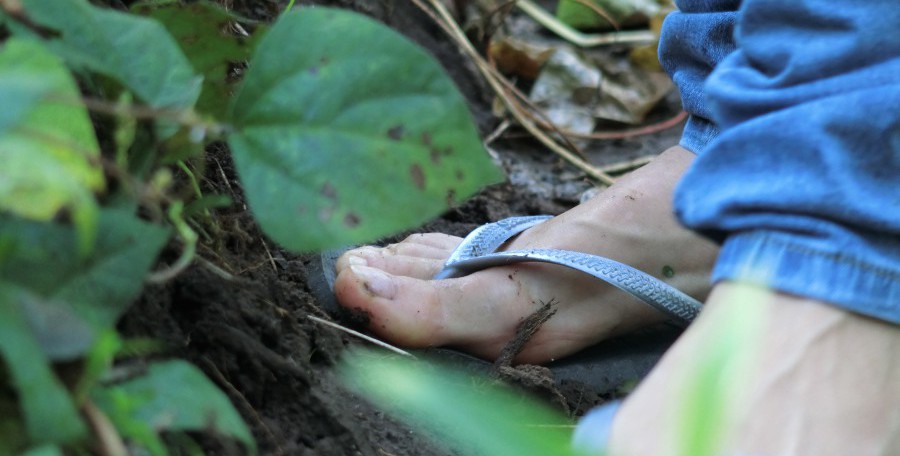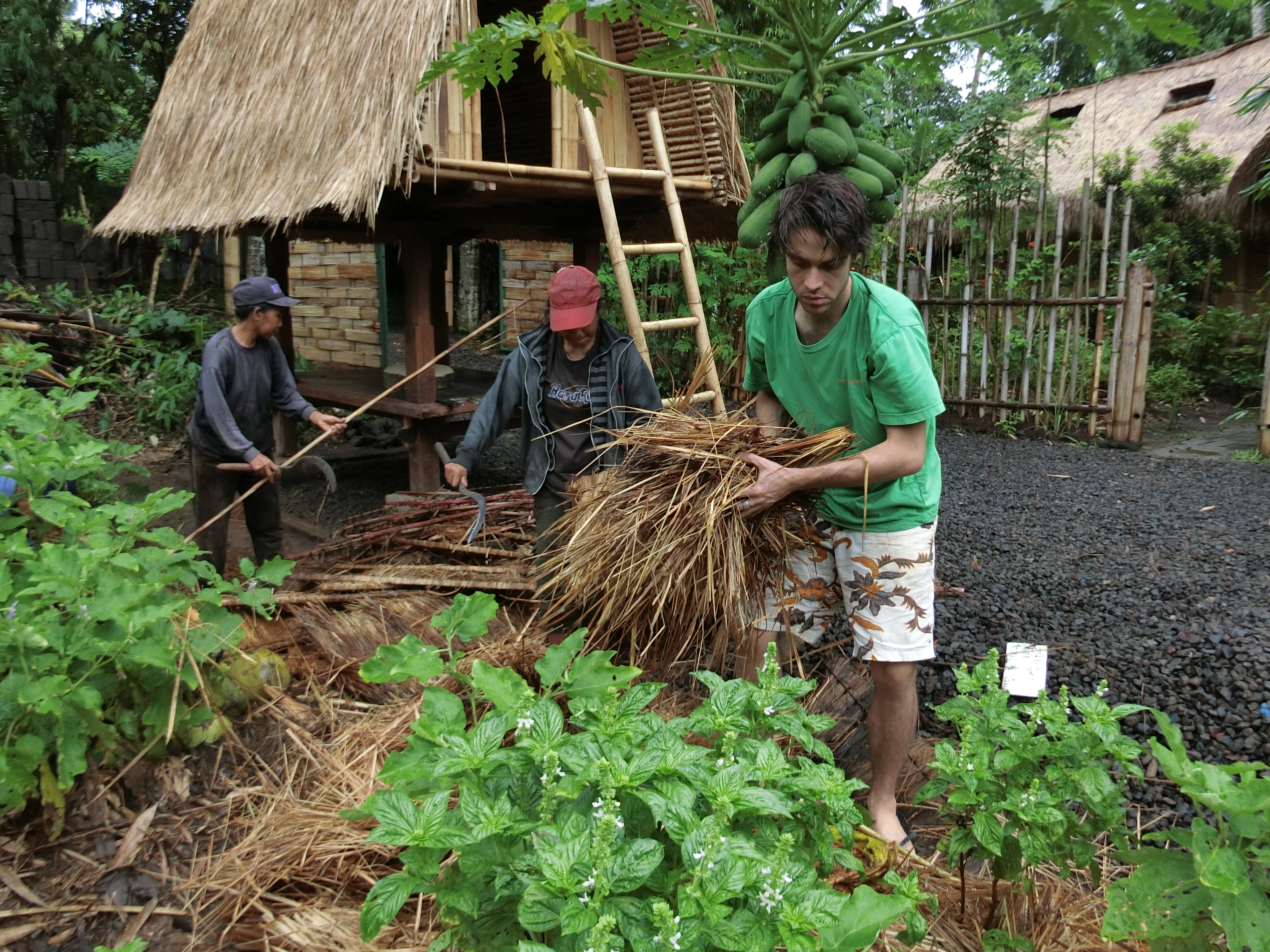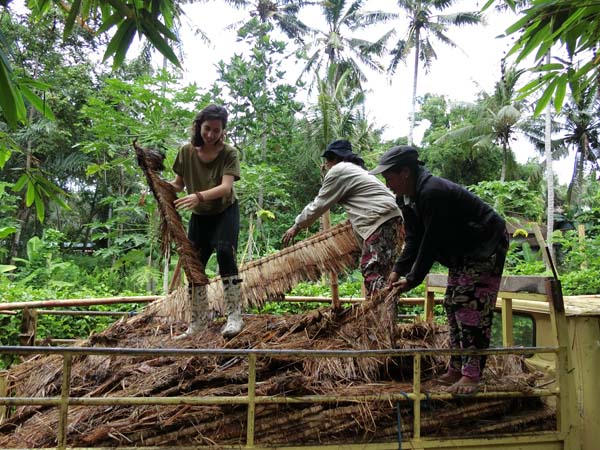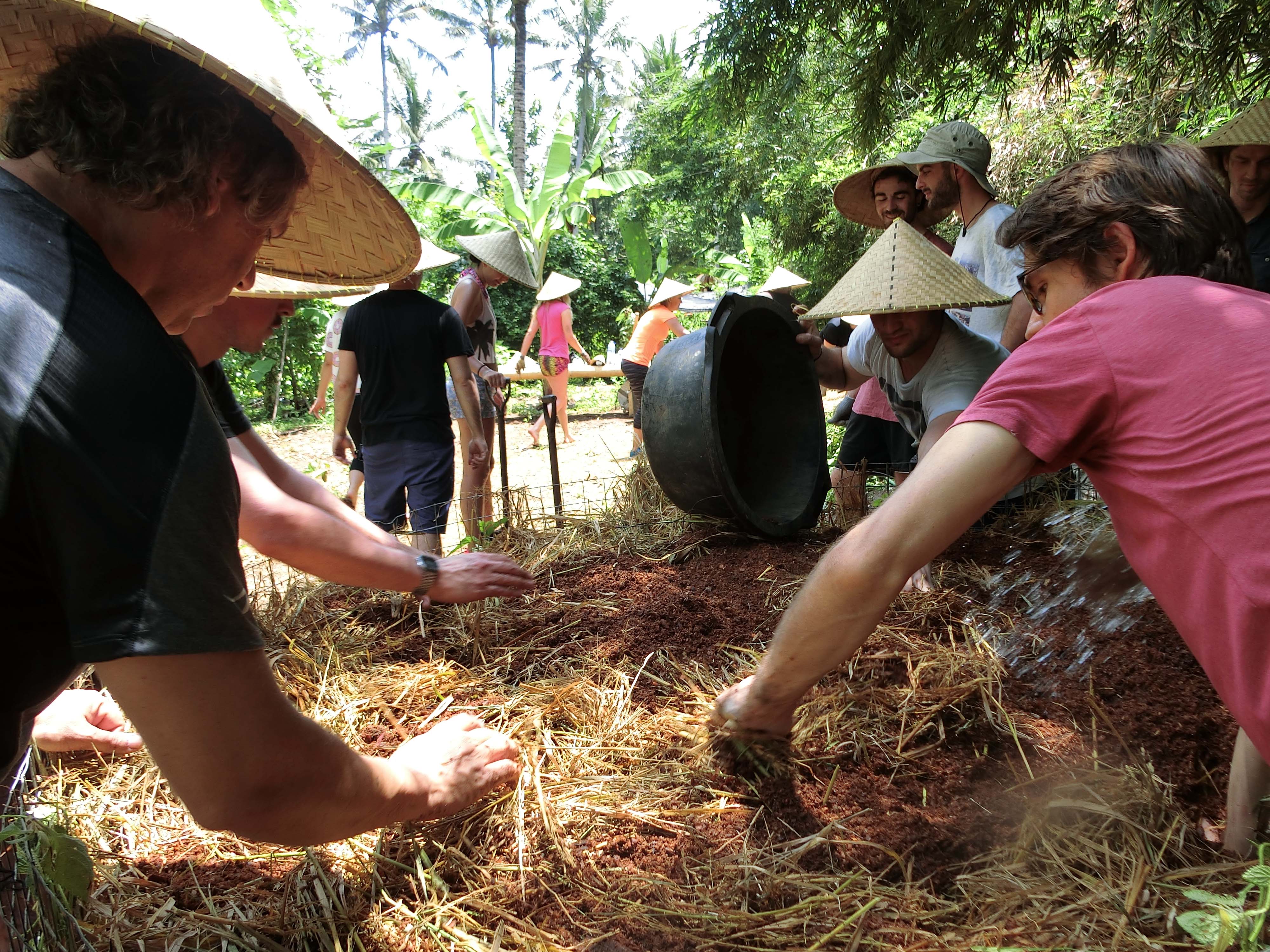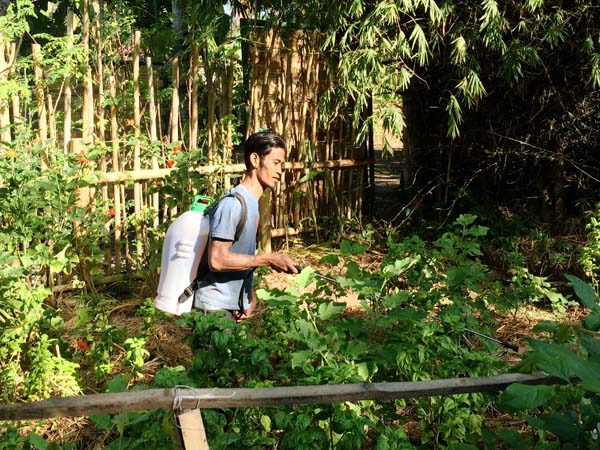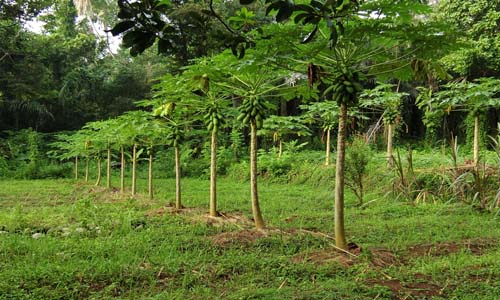Soil is more than just dirt. It is a complex creature that comes in many forms. Some soil is clay, others are sandy, some are full of rocks, while others are a perfect loam. But whatever type your soil is, they all like to eat, and to be a healthy soil they need to be full of organic matter and soil organisms.
Most of us don’t fully appreciate the fact that soil is naturally full of life: bacteria, fungi, protozoa and all kinds of creepy crawlies. This is a good thing, because all the life in the soil helps to decompose dead organic matter so plants can absorb the nutrients. Here at The Kul Kul Farm we’ve been working to regenerate the soil so we can grow healthy organic crops. A common misconception in agriculture is that the most important thing is to feed your plants. But many advocates of organic farming will tell you that in fact if you want to sustain high yields while reducing inputs you need to feed your soil first and foremost. When you feed your soil you are encouraging the growth of benificial micro-organisms that break down organic matter in the ground into nutrients that plants can absorb.
Here are some fundamentals to a healthier soil ecosystem:
Keep it moist, well drained, sheltered from sunlight and rain
Keep it full of organic matter
Don’t let anyone at it with a hoe unless it is really compacted. Instead use a garden fork and poke it to loosen and aerate it. Life likes oxygen and so do soil microbes.
Once you’ve loosened it, mulch it. In the tropics, if you don’t mulch your soil it becomes hard from heavy rainfall. To protect it from raindrops pounding on its surface you need to cover it with a thick layer of organic matter. This actually helps absorb more water and provides food and shelter for soil microorganisms to thrive. It also allows more surface area to multiply in the mulch as it begins to decompose into humus.
Here in Bali my favorite mulch is Alang-Alang thatch (baldy grass) which I get from old roofs. Fallen leaves from the garden also make excellent mulch, and utilize garden waste that would otherwise end up being burned or taken to a landfill. For some plants wood chips and sawdust can also be used, but be careful because wood often naturally contains chemicals and tannins that inhibit decomposition as well as plant growth. Rice straw collected after a rice harvest can also be used. However keep in mind it is likely to be full of chemicals that are sprayed on the rice and may harbor pests and diseases from the rice field. In commercial settings plastic is sometimes used as a mulch to protect the soil, but for personal gardens it is an eye sore, and just adds more plastic to the world when it is not needed. It also doesn’t break down so it shelters the soil but does not feed it. If all you do on your plot of land is add mulch, it will improve its fertility and build soil.
Another key ingredient to healthier soil is good compost. Not any old compost but living compost that has a rich range of nutrients, and microorganisms. Ideally one teaspoon of compost is 50% bacteria and 50% microorganism. Recently I’ve been following the Bio-vital specialist compost method used by Paul Taylor. Some things to look for to check the quality of your compost are its smell, color, texture, and how well it holds water. It should smell good (like soil), be a dark brown, be soft and fluffy and easily absorb water. If it is really black, repels water, clumps together, or smells putrid, don’t use it! It is also good to add trace elements such as bone ash, agricultural lime, rock dust, and seaweed to your mix. Put your compost around the base of your plants and under your mulch. Make sure if you are storing it, it is moist – not too wet and not too dry.
It is also a good idea to spray beneficial strains of bacteria directly on your soil. Effective Micro Organisms or EM is an easy way to do this. In most places it can be purchased in bottles and sprayed on your soil and crops and is made up of a few strains of beneficial bacteria (there are various types of EM) that help balance the soil food web. They promote healthy bacteria and suppress unhealthy strains. It works much like a probiotic that you would take to maintain healthy flora in your gut. Compost tea is also beneficial. You can make this by putting your compost in a sock in a bucket of water adding a little bit of molasses, and aerating it with an aquarium pump. There are more specific recipes such as Paul Taylor’s Liquid probiotic which he developed with Elaine Ingham in Australia. I am looking forward to trying this method, but need to build a proper aerator and source the needed ingredients.
The last recommendation I have for building soil fertility is crop rotation. Don’t grow the same crop in the same place twice. There are many different sequences of crops and you can geek out on what to plant where and when, but here are a few simple tips. Beans before greens; plant a nitrogen fixing legume before a leafy green to boost the nitrogen in the soil. Roots and tubers tend to do better in less fertile soil and don’t need as much nitrogen as greens. Different crops take up different nutrients so rotating crops allows depleted nutrients from one planting to recharge as the other is growing. Don’t plant crops from the same family sequentially. For example tomatoes and chiles are both in the solinaceae family so should not be planted one after the other. The same applies for brassicas such as cabbage, kale, and bok choy, and alliums such as onions garlic and chives. Planting crops that are closely related in the same bed also makes it easier for diseases and pathogens to develop and harm the crops. If you are interested in learning more about soil fertility I recommend Eliot Coleman’s Book ‘A New Organic Grower’.
If you want to give your plants an extra boost once you’ve added to your soil, you can still do so by feeding their roots directly with organic liquid fertilizers. This delivers nutrients directly to your plants. An easy liquid fertilizer source is from a worm farm. Have a look here. Anaerobic liquid fertilizers can also be made using airtight containers. There is a good blog post on Milkwood.net that explains how to make it.
Feeding your soil well is a good way to ensure you are eating well. It helps provide adequate nutrients that end up in your food. It will make your soil more fertile over time and improve the quality of your crops year after year, to guarantee a regenerative future for our children. Healthy nutrient-rich food is something we should all have in our diets, but it is only possible if we have healthy soil.

